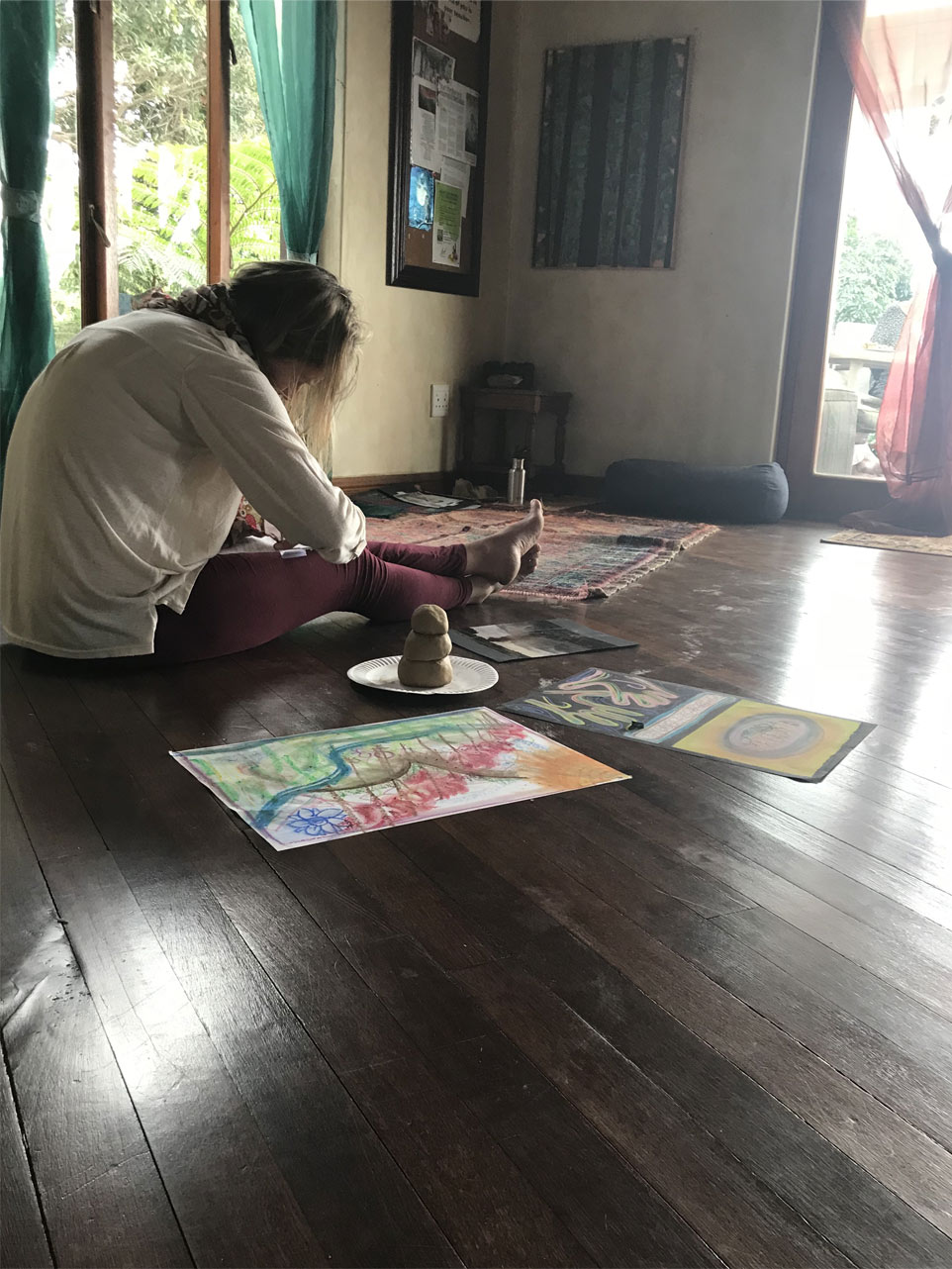“The artistic and expressive medium of singing and songwriting is a vehicle through which we relocate ourselves in time and space. Engaging in writing a song or choosing a song that has meaning for us is our compass. It is the conscious and embodied singing of this song that is our anchor.”
Melanie Harrold
Voice Movement Therapy has some of its roots in theatre. Founder Paul Newham, initially a theatre practitioner himself, was inspired by the experimental and groundbreaking voicework of people such as Jerzy Growtowski, Peter Brook, Roy Hart, and Enrique Pardo, and the echoes of their work is evident in VMT. Voice Movement Therapy practitioners, many of them performers themselves, work with clients in the context of the performing arts. VMT clients range from those who have never sung but want to, to trained singers, and from theatre students to professional performers and voice-over artists. Voice Movement Therapy offers a unique and dynamic approach to voice coaching.
Coaching The Singing & Speaking Voice
Technical Aspects
VMT works with: the Ten Vocal Components to develop range, expressivity, and dynamics; the concept of a malleable, flexible vocal tube to enhance vocal quality, timbre, and dexterity; and breathwork to deepen and broaden expansion, breath capacity, control, and improve vocal production and projection. A comprehensive technical understanding of the voice and vocal production from an embodied perspective supports vocalists in their ongoing and long-term vocal health.
Carol Grimes
Playing the singing voice
Physical Aspects
Voice Movement Therapy views the body as an instrument and works with the whole body, not only the vocal and breathing apparatus. Simply put, the body — its movement, posture, and energy — affects the voice and it’s production. VMT practitioners are trained in identifying physical tension in the body that impacts the voice. All aspects of VMT integrate this whole-body philosophy and aim to release habitual bodily and vocal tension or holding patterns, promoting physical relaxation and expansion.
VMT utilizes massage to release the neck, shoulders, back, and diaphragm, and free and creative movement to enhance a physical sense of flow, grounding, and balance. Working with the body in space and along the planes of motion, while breathing and sounding, facilitates embodiment, sensitizing us to how our environment influences our voice, confidence, and performance energy.
“Introducing voicework to traditionally non-vocal arts practitioners – such as dancers, musicians, and fine artists – provides imaginative expansion, nurtures creativity, and integrates the body-mind and voice in a unique way that has a positive ripple effect into the expressive medium of choice.”
Gina Holloway Mulder
Psychological and Emotional Aspects
Our voice is so much a part of our identity that any voicework, whether it be for singing or acting, can bring with it a psychological aspect. As a somatic psychotherapeutic modality, VMT provides the singer/performer with a framework for understanding and working with psychological material that may come up through voicework. VMT acknowledges the importance of how one’s personal narrative and sense of self can impact one’s voice and performance.
Our voices carry and communicate emotion. VMT practitioners are trained in feeling, sensing, and working with emotions that are latent in vocal and movement expression. Our emotional state impacts our body and voice, and VMT utilizes this toward the process of creative and vocal development. VMT can help deepen a performer’s emotional connection to their material and to themselves.
“Without listening to one’s voice, without ‘hearing’ and understanding the psychical source behind it, then without altering the essence of the inner personality, the voice will never truly change.”
Sheila Braggins

Creativity
By incorporating images, improvisation, and elements of play, VMT creatively engages and invites the voice to explore new landscapes. Practitioners may include other art media such as drawing, painting, photography, film, musical instruments and storytelling in order to inspire the imagination and prompt novel vocal and movement exploration, guiding the student towards alternative vocal territory and to writing and singing their own songs.
For non-vocal artists, integrating aspects of VMT into the art medium of choice can lead to embodiment and freedom of expression, while adding new layers of personal meaning. VMT offers a structure for tapping into personal story as a resource for creativity and expression, and for the generation and personal investigation of images and experiences that then become part of the creative process. VMT can guide or inspire devised theatre and serve as a way to reach deeply into what it is we want to say, or voice, as artists.
Blocks
Blocks are most often brought on by fear — the fear of sounding ‘bad’ or ‘wrong.’ The Voice Movement Therapy approach to voicework is non-judgmental; there are no ‘bad’ or ‘wrong’ sounds. VMT works to nurture a malleable and expressive voice that is free of blocks and unrestricted by fear. Students and clients are encouraged to explore the boundless possibilities of the sounds their voices can make without the need to be the ‘perfect’ singer.
Emotions and blocks
Performance Energy and Confidence
Energy of any kind is kindled in the body. The body that is grounded, free, and expressive is able to generate more energy and share this energy through its ability to expand outwards. In performance when the body, voice, and Self are aligned, great energy can be harnessed for connecting with and moving an audience. In other words, performance energy is not something you can muster up with your mind; it is an embodied phenomenon the skills of which are fully developed through the practice of Voice Movement Therapy.
It is through the improved levels of self-awareness and the integration of the body, voice, and mind that an unwavering self-trust is developed in the singer/performer/artist. This trust, supported by self-compassion, is what gives those who practice VMT a solid and physically grounded confidence.
